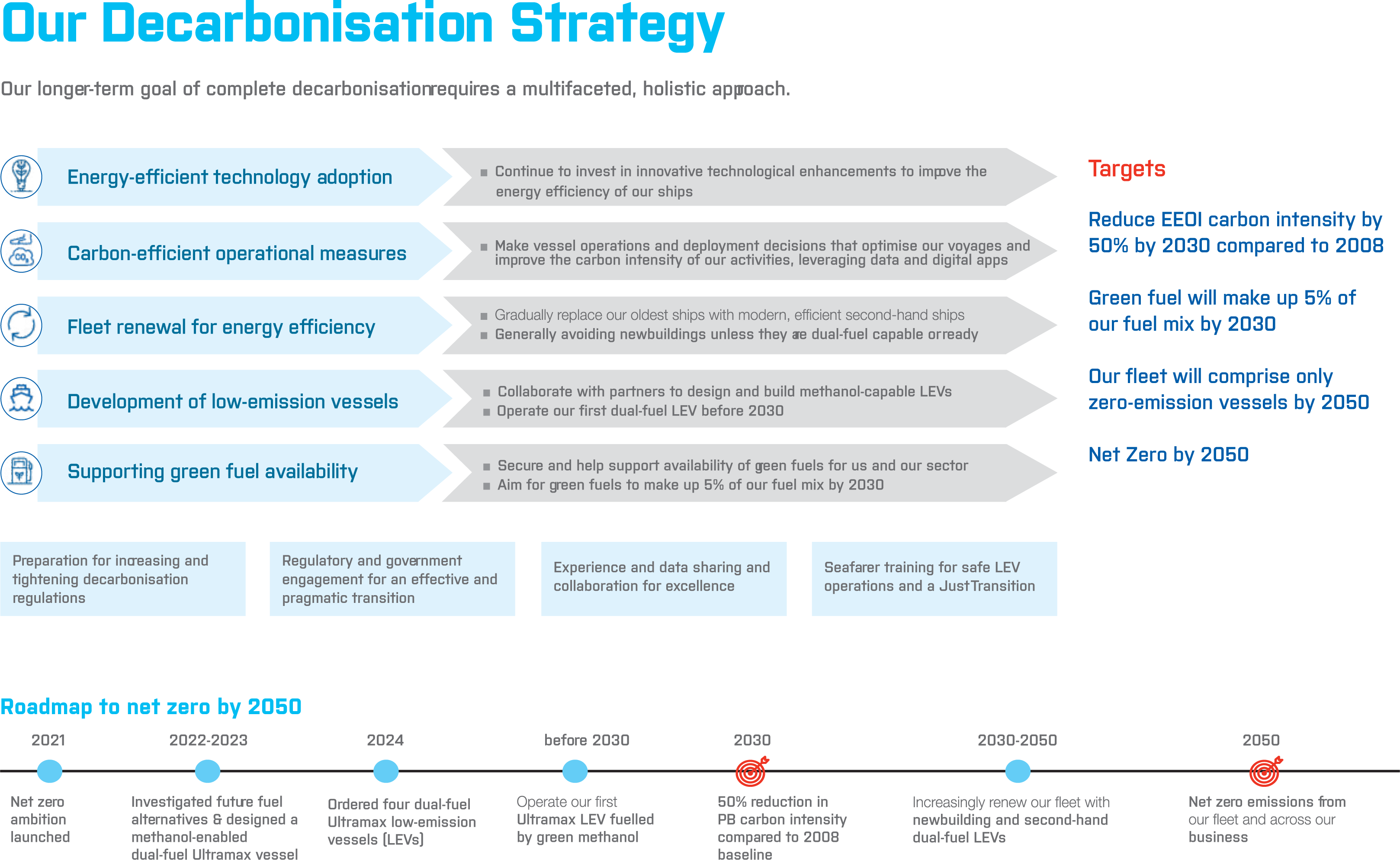The primary environmental impacts of shipping are emissions and discharges. At sea and in port, these outputs are substantially all regulated and compliance is enforced across international, regional and local jurisdictions.
We recognise our responsibility to reduce our operations' impact on air, sea and land, and our Pacific Basin Management System is designed to measure and continually improve every aspect of fleet operations, including our environmental outputs.
Ambition
As a leading dry bulk ship owner and operator, Pacific Basin seeks to further improve our fleet scale, optimise our performance and offer flexible and reliable service while striving to minimise environmental impact. We take responsibility for decarbonising our fleet, managing our waste, marine discharges and resources consumption, ensuring our ships are primed for proper recycling and minimising our biodiversity impacts as we continue to grow our business.
Decarbonising our fleet
We target to become net zero by 2050 to reduce our impact on climate change by adopting technical and operational measures, preparing for technical and economic regulatory measures and supporting the development and deployment of green fuels and low-emission vessels.
Minimising our environmental impact
We manage and operate our fleet and offices with a commitment to reducing our resource consumption, waste footprint and biodiversity impacts. We ensure that our older ships that we sell are primed for proper recycling at end of life.
Enhancing and optimising green & safe ship operations
We strive to adopt industry best practices and promote a culture of high standards to ensure environmentally-responsible and safe ship operations through continued investment in training, systems, procedures and technology.
Regulation is Driving DecarbonisationBulk carriers are by far the most energy-efficient mode of transportation, meaning also that they generate significantly less carbon emissions per tonne-mile of cargo carried than any other mode using fossil fuels. However, we recognise that shipping’s share of global greenhouse gas emissions (currently about 3%) will rise if left unchecked and that an ambitious approach is needed if shipping is to align with the 1.5oC limit and net zero by 2050 goal of the UNFCCC, and so we – and our industry – need to do our bit to constantly find ways to reduce our emissions and ultimately decarbonise altogether. Effective from January 2023, the International Maritime Organization (IMO) implemented the first global regulations (short-term measures) to start the challenging process of decarbonisation across our industry and, during that year, IMO published a revised, more ambitious greenhouse gas (GHG) strategy, and we learned more about EU plans to regulate on GHG emissions from shipping (EU ETS and FuelEU Maritime) which are now in effect. In 2025, we are due to learn more about IMO’s planned technical and economic measures (mid-term measures) scheduled to take effect in 2027. |

-
Responsible business fundamentalsWhat good governance means to us Good corporate governance enhances stakeholder confidence in Pacific Basin as a partner and a place to invest.
-
Our ESG StrategyFind out more ESG is about recognising our responsibilities to the safety and wellbeing of our staff, the environment and the communities in which we operate.
-
2024 Sustainability ReportView our Sustainability Report (PDF)


